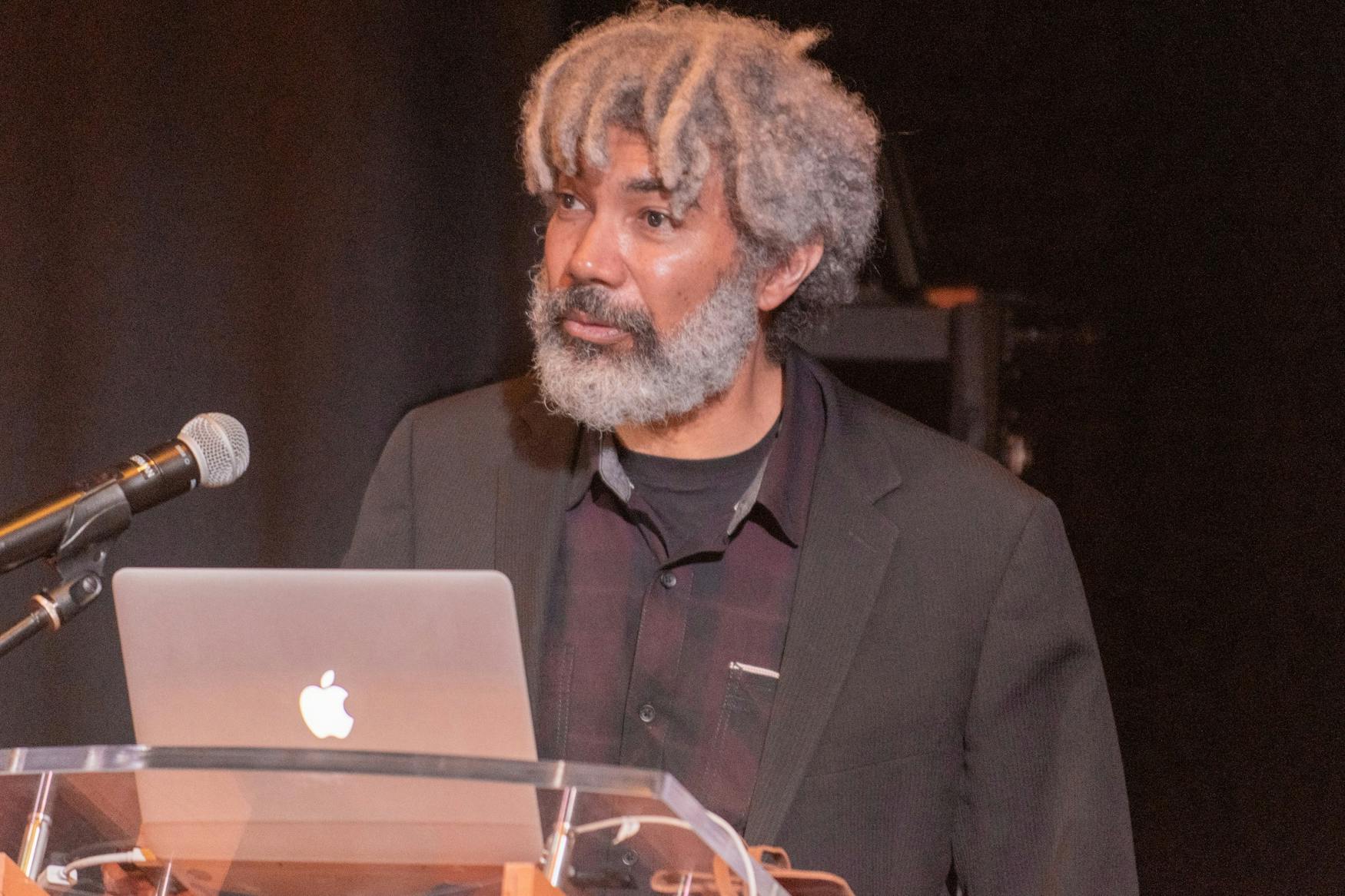Visual artist wins award for artwork exploring racism
Artist Fred Wilson discussed his past projects and art exhibitions at the award ceremony.
Dean of the School of Arts and Sciences Dorothy Hodgson presented the University 2019 Creative Arts Award to visual artist Fred Wilson on behalf of University President Ron Liebowitz for Wilson’s critical work regarding institutional racism, in the Wasserman Cinematheque on Tuesday.
According to the University website, the award recognizes “excellence in the arts and the lives and works of distinguished, active American artists.” The University established the award in 1956 and granted it to those who had either “left an enduring mark upon their times” or artists emerging in their field of study. Early recipients include composer Aaron Copland, painter Mark Rothko and artist Georgia O’Keeffe. In 1995, the award became The Poses Institute of the Arts at Brandeis University and awarded annual residencies for artists, which allowed the artist to reside within the institution while creating art. The University then revived the Creative Arts Award in 2015.
Wilson’s work was distinguished because it “challenges dominant assumptions of history, culture, race and conventions of display,” Hodgson said. She emphasized how Wilson’s art exposed society’s flaws while “also imagining paths to healing, inclusion, justice and light.”
Upon receiving the award and medal, Wilson discussed past projects that he worked on, focusing on his exhibition in the Maryland Historical Society. In 1992, Wilson said, his work in “alternative gallery settings” garnered the attention of the curator of The Contemporary, an art museum in Baltimore, MD. The museum sponsored Wilson’s “Mining the Museum” one-year exhibition in the Maryland Historical Society, which involved spatial arrangements of objects from the museum’s archives as a way of conducting institutional critique.
For example, a piece titled “Metalwork 1793-1800” juxtaposes the presentation of silver cups and pitchers with slave shackles. Wilson explained that he chose to work in the Maryland Historical Society because of the discomfort he felt there, referring to the racial undertones of the presentation of objects and artifacts from American history.
Wilson said he created the exhibition after scouring the museum’s collections and archives and speaking to as many museum employees as possible, including board members and custodial staff. He used his research to create installations on the third floor of the museum using objects from the collections and archives. “I wanted people to understand that I was going to take over the whole place. I was going to look at everything — the entire space. I controlled the lighting, the wall space, the labels, colors of the space and the arrangement,” Wilson said. “I wanted to make the museum mine.”
Wilson displayed images of several different arrangements from the Baltimore exhibition. One image depicted a gold globe-shaped trophy with the worth “TRUTH” on it. To the right of the trophy were busts of Henry Clay, Andrew Jackson and Napoleon. To the left of the trophy, Wilson arranged three empty pedestals, each with a label of the name of Harriet Tubman, Benjamin Banneker and Frederick Douglass. Wilson commented on how the museum had busts of white historical figures, including one of Napoleon, who had never visited Maryland, but no busts of the notable Black historical figures who had all been to Maryland at some point in their lives.
In another work, Wilson said he arranged chairs representing different class statuses around a whipping post he found in the museum’s archives. He also presented a photo of an installation in which he placed a Ku Klux Klan hood he had found in the museum inside a baby stroller.
Taking on a more curatorial role, Wilson said he displayed paintings he found of white children with Black children in the periphery.
He explained that the museum was “meant for the elites of Maryland and everyone who came in, even the docents, would take that on and live it in the institution.” Wilson illustrated this point by recounting how the director of the museum said that he never realized there was a Black child in one of the paintings. “You’re not meant to see the Black child, the Black presence in the museum,” he explained.
Wilson also discussed his show in the Venice Biennale International Art Exhibition, in which he said he wanted to draw attention to the contributions of Black people to Italy’s history. Pieces in the show included stories he created for Black characters from Italian Renaissance paintings and statues of Black figures shown to be holding up a building titled “Stati Uniti D’America,” or the United States of America.
Wilson noted that he shifted to glasswork when he started creating chandeliers made of Black glass, titling the chandeliers with lines from Shakesespeare’s “Othello.” He included these works in his Istanbul exhibition, where, similar to his Venice exhibition, Wilson said he wanted to highlight the presence of the minority Black population in Turkey.



Please note All comments are eligible for publication in The Justice.